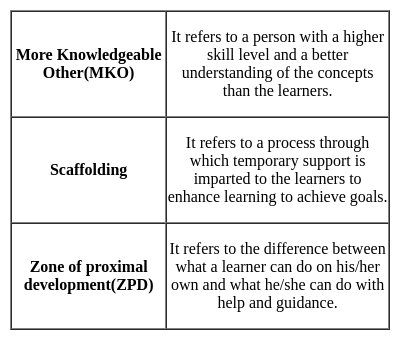CDP (Vygotsky's Theory - CTET & State TET MCQ
10 Questions MCQ Test Child Development and Pedagogy for CTET Preparation - CDP (Vygotsky's Theory
The temporary support that parents provide to a child for a task until the child can do it on his own is termed as
What is true related to Vygotsky's finger-pointing gesture:
Assertion:(A) Initially, this behaviour begins as a meaningless gesture; however, as people react to the gesture, it becomes a moment that has meaning.
Reason:(R) In particular, the pointing gesture reprbehavioresents an interpersonal connection between individuals.
According to the Sociocultural theory of Vygotsky, which one of the following is true?
A child is struggling to learn how to read. By working with the student to teach how to sound out words and use other word recognition strategies, the child is able to learn to read. Which construct does the above example highlight?
Lev Vygotsky has included the factors involved in the cognitive development of the child:
Vygotsky talks about the "Pointing finger gesture" concept for communication. According to him, it develops
Before going to give a speech on teacher’s day, Raman practices by giving speech in front of the mirror. Vygotsky described this activity as ________.
|
70 videos|154 docs|42 tests
|
|
70 videos|154 docs|42 tests
|



















